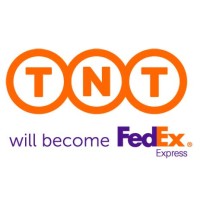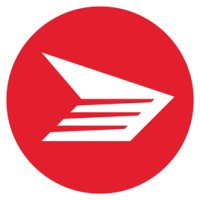
Magyar Posta Company Cyber Security Posture
posta.huA Magyar Posta Zrt. több mint 150 éve Magyarország ismert és elismert nemzeti postai szolgáltatója. Magyarország egyik legnagyobb foglalkoztatójaként 21.000 munkavállaló segítéségével, több mint 2150 postájával és 450 mobilposta járatával behálózza az országot, egymással és az egész világgal kapcsolja össze a magánembereket és a vállalkozásokat. A Magyar Posta célja, hogy teljes körű postai, pénzforgalmi és pénzügyi szolgáltatást nyújtson a magánszemélyek és az üzleti világ ügyfelei számára egyaránt. Szolgáltatásaink:  levélpostai és csomagküldemények felvétele, szállítása, kézbesítése  komplex logisztikai szolgáltatások  banki, pénzügyi közvetítő tevékenység  pénzforgalmi szolgáltatás nyújtása  megtakarítás- és biztosításközvetítés  hírlapterjesztés  kereskedelmi tevékenység További információk: www.posta.hu A Magyar Posta Zrt. nagy sikernek örvendő mobil applikációja elérhető és letölthető az alábbi linkeken: https://itunes.apple.com/hu/app/magyar-posta-uzleti-alkalmazas/id914923477 https://play.google.com/store/apps/details?id=hu.posta.uzletimobil https://www.microsoft.com/hu-hu/store/apps/magyar-posta-applik%C3%A1ci%C3%B3/9nblggh58ttk
Magyar Posta Company Details
hungarian-post
10,001+ employees
0
492
Freight and Package Transportation
posta.hu
15
MAG_1102981
In-progress
Between 900 and 1000
This score is AI-generated and less favored by cyber insurers, who prefer the TPRM score.
 Magyar Posta Global Score
Magyar Posta Global Score.png)

Magyar Posta Company Scoring based on AI Models
| Model Name | Date | Description | Current Score Difference | Score |
|---|---|---|---|---|
| AVERAGE-Industry | 03-12-2025 | This score represents the average cybersecurity rating of companies already scanned within the same industry. It provides a benchmark to compare an individual company's security posture against its industry peers. | N/A | Between 900 and 1000 |
Magyar Posta Company Cyber Security News & History
| Entity | Type | Severity | Impact | Seen | Url ID | Details | View |
|---|
Magyar Posta Company Subsidiaries

A Magyar Posta Zrt. több mint 150 éve Magyarország ismert és elismert nemzeti postai szolgáltatója. Magyarország egyik legnagyobb foglalkoztatójaként 21.000 munkavállaló segítéségével, több mint 2150 postájával és 450 mobilposta járatával behálózza az országot, egymással és az egész világgal kapcsolja össze a magánembereket és a vállalkozásokat. A Magyar Posta célja, hogy teljes körű postai, pénzforgalmi és pénzügyi szolgáltatást nyújtson a magánszemélyek és az üzleti világ ügyfelei számára egyaránt. Szolgáltatásaink:  levélpostai és csomagküldemények felvétele, szállítása, kézbesítése  komplex logisztikai szolgáltatások  banki, pénzügyi közvetítő tevékenység  pénzforgalmi szolgáltatás nyújtása  megtakarítás- és biztosításközvetítés  hírlapterjesztés  kereskedelmi tevékenység További információk: www.posta.hu A Magyar Posta Zrt. nagy sikernek örvendő mobil applikációja elérhető és letölthető az alábbi linkeken: https://itunes.apple.com/hu/app/magyar-posta-uzleti-alkalmazas/id914923477 https://play.google.com/store/apps/details?id=hu.posta.uzletimobil https://www.microsoft.com/hu-hu/store/apps/magyar-posta-applik%C3%A1ci%C3%B3/9nblggh58ttk
Access Data Using Our API

Get company history
.png)
Magyar Posta Cyber Security News
Senate committee advances Trump nominee to lead cybersecurity agency that protects election systems
A U.S. Senate committee voted Wednesday to advance President Donald Trump's pick to lead the agency that secures the nation's critical ...
Army secretary directs West Point to rescind appointment of Biden-era cybersecurity director
The Secretary of the Army has directed the U.S. Military Academy at West Point to review its hiring practices and rescind the appointment of ...
AI Threats Raise Demand for Cybersecurity Products That Don’t Exist (Yet)
Artificial intelligence that handles complex tasks with minimal human oversight, also known as an agent, is creating a bevy of security ...
CMMC readiness: Top 3 disruptions affecting the Defense Industrial Base
Engage a CMMC certified professional or assessor, or at least assess your contracts and clarify CUI expectations with your contracting officer.
Cybersecurity upstart Legion emerges from stealth with $38 million from Accel, Coatue, and others
Today, I'm sharing the news that alums of Microsoft cyber protection product Sentinel have launched cybersecurity company Legion with $38 ...
AI agent autonomously solves complex cybersecurity challenges using text-based tools
Artificial intelligence agents—AI systems that can work independently toward specific goals without constant human guidance—have ...
Research shows LLMs can conduct sophisticated attacks without humans
Research shows LLMs can conduct sophisticated attacks without humans · Carnegie Mellon University researchers have demonstrated that large ...
Tonic Security raises $7M Seed round to tackle cybersecurity alert overload
The Israeli startup aims to help companies better prioritize and respond to risks.
ASU students tackle cancer, climate change and cybersecurity through summer internships
From studying cancer to tracking floods to improving cybersecurity in health care, three Arizona State University graduate students are ...

Magyar Posta Similar Companies

FedEx
FedEx connects people and possibilities through our worldwide portfolio of shipping, transportation, e-commerce and digital supply chain services. For decades, we’ve been innovating to deliver more for you. Strengthening supply chains with our global network. Simplifying logistics. Enhancing trackin

VNPost
Tên giao dịch: Tổng Công ty Bưu chính Việt Nam Tên viết tắt: Bưu chính Việt Nam Tên giao dịch quốc tế: Vietnam Post Tên viết tắt quốc tế: VNPost Với mạng lưới các điểm phục vụ rộng khắp, trải dài đến tận cấp xã trên cả nước và kinh nghiệm cung cấp các dịch vụ về Bưu chính chuyển phát, các d

DHL Express Italy
Presente in oltre 220 Paesi nel mondo con proprie sedi e persone, la nostra azienda è in grado di unire alla capillarità del network la conoscenza approfondita dei mercati locali, delle procedure doganali e delle caratteristiche di trasporto e distribuzione specifiche dei diversi Paesi. Ogni gi

TNT
TNT Express was acquired by FedEx in 2016. FedEx connects people and possibilities through a worldwide portfolio of shipping, transportation, e-commerce and business services. FedEx offers integrated business applications through collaboratively managed operating companies — collectively deliverin

Canada Post / Postes Canada
As the country's postal service and leading ecommerce delivery company, we’re committed to serving Canadians and Canadian businesses, working for the greener good, and delivering a stronger Canada. We are the only delivery organization with the network and commitment to serve all of the more than 1

Pos Malaysia Berhad
Pos Malaysia Berhad [199101019653 (229990-M)] is the national postal and parcel service provider and sole licensee for universal postal services in Malaysia. With a history of over 200 years, the company has diversified beyond the traditional provision of mail and parcel delivery to also offer retai

Frequently Asked Questions
Explore insights on cybersecurity incidents, risk posture, and Rankiteo's assessments.
Magyar Posta CyberSecurity History Information
How many cyber incidents has Magyar Posta faced?
Total Incidents: According to Rankiteo, Magyar Posta has faced 0 incidents in the past.
What types of cybersecurity incidents have occurred at Magyar Posta?
Incident Types: The types of cybersecurity incidents that have occurred include .
Incident Details
What are the most common types of attacks the company has faced?
Additional Questions
What Do We Measure?
















Every week, Rankiteo analyzes billions of signals to give organizations a sharper, faster view of emerging risks. With deeper, more actionable intelligence at their fingertips, security teams can outpace threat actors, respond instantly to Zero-Day attacks, and dramatically shrink their risk exposure window.
These are some of the factors we use to calculate the overall score:
Identify exposed access points, detect misconfigured SSL certificates, and uncover vulnerabilities across the network infrastructure.
Gain visibility into the software components used within an organization to detect vulnerabilities, manage risk, and ensure supply chain security.
Monitor and manage all IT assets and their configurations to ensure accurate, real-time visibility across the company's technology environment.
Leverage real-time insights on active threats, malware campaigns, and emerging vulnerabilities to proactively defend against evolving cyberattacks.




